


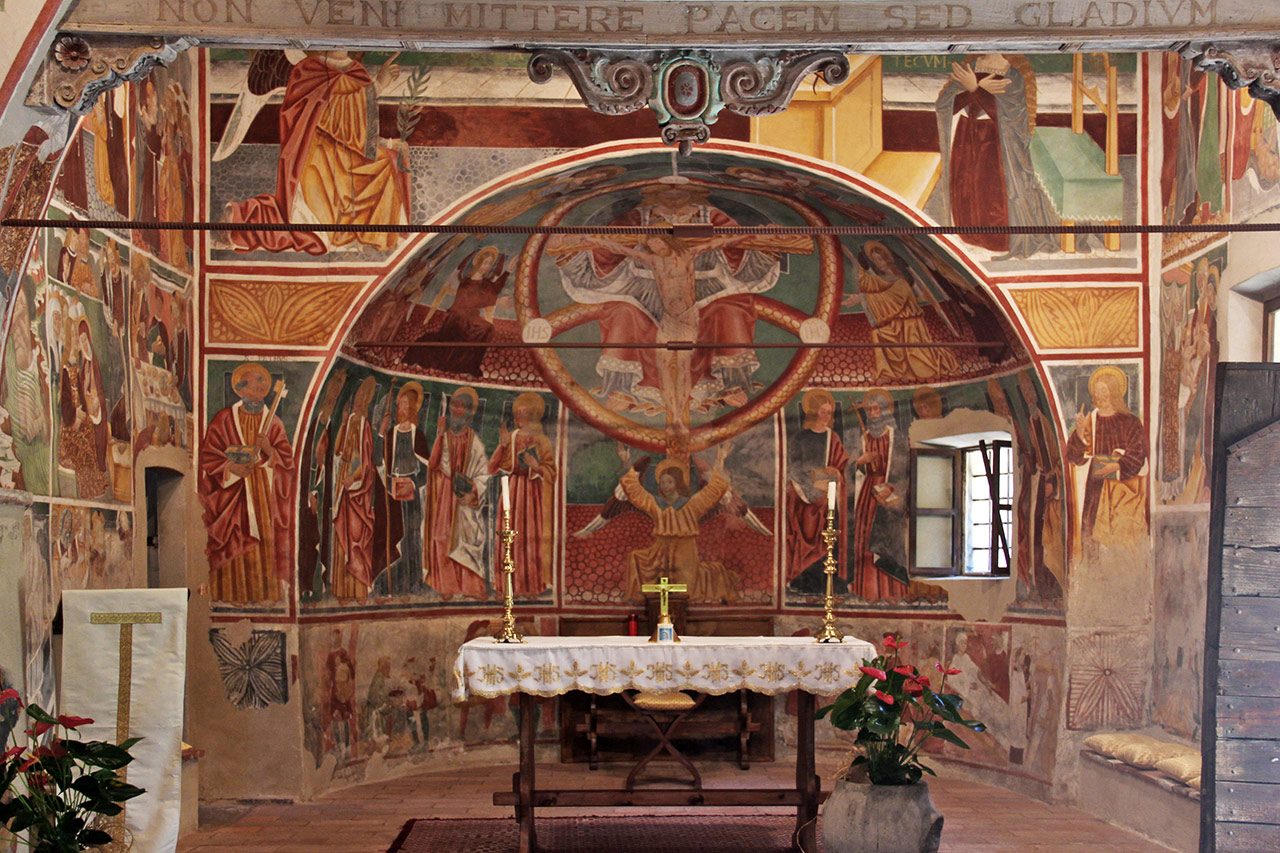
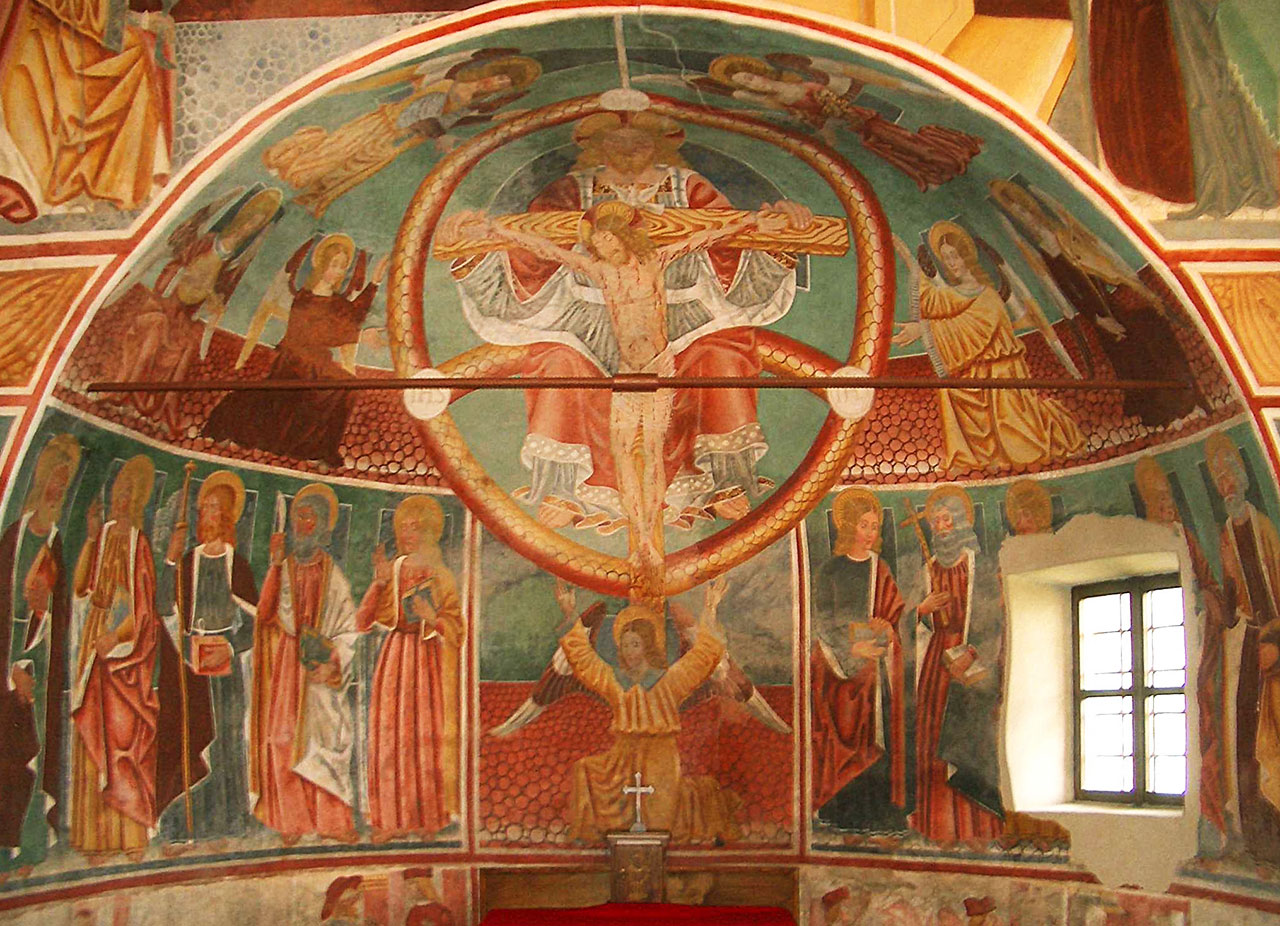


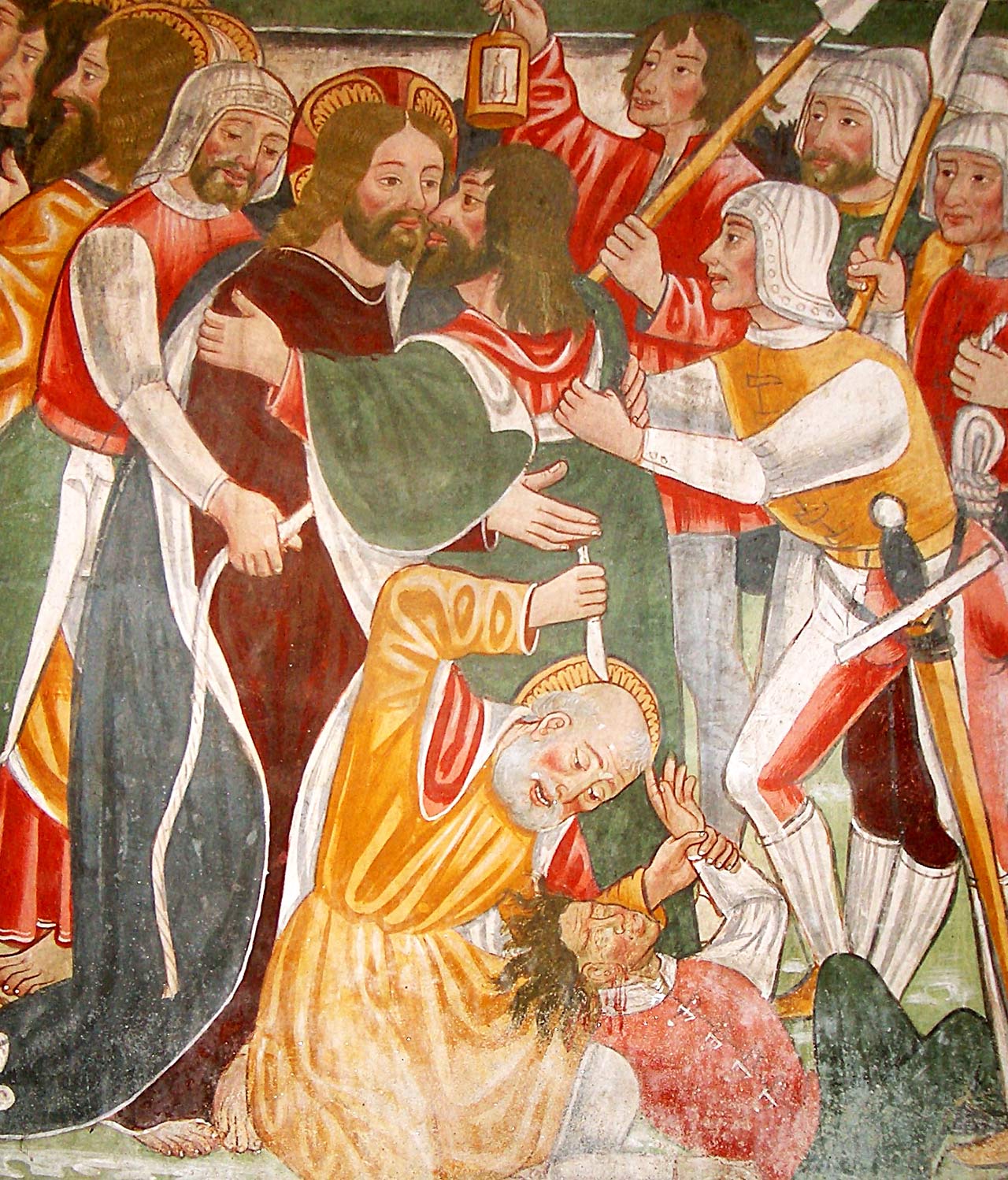

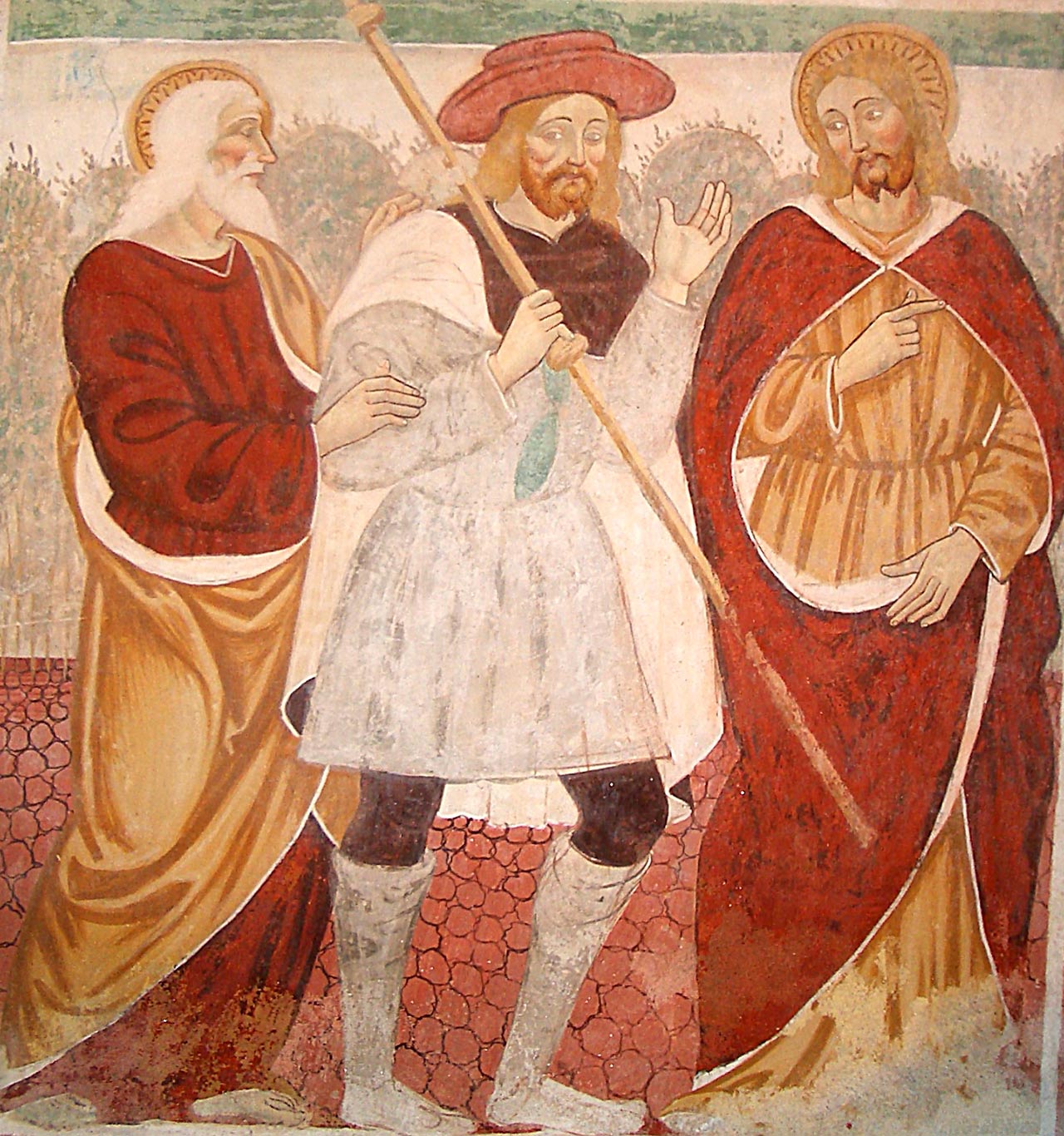

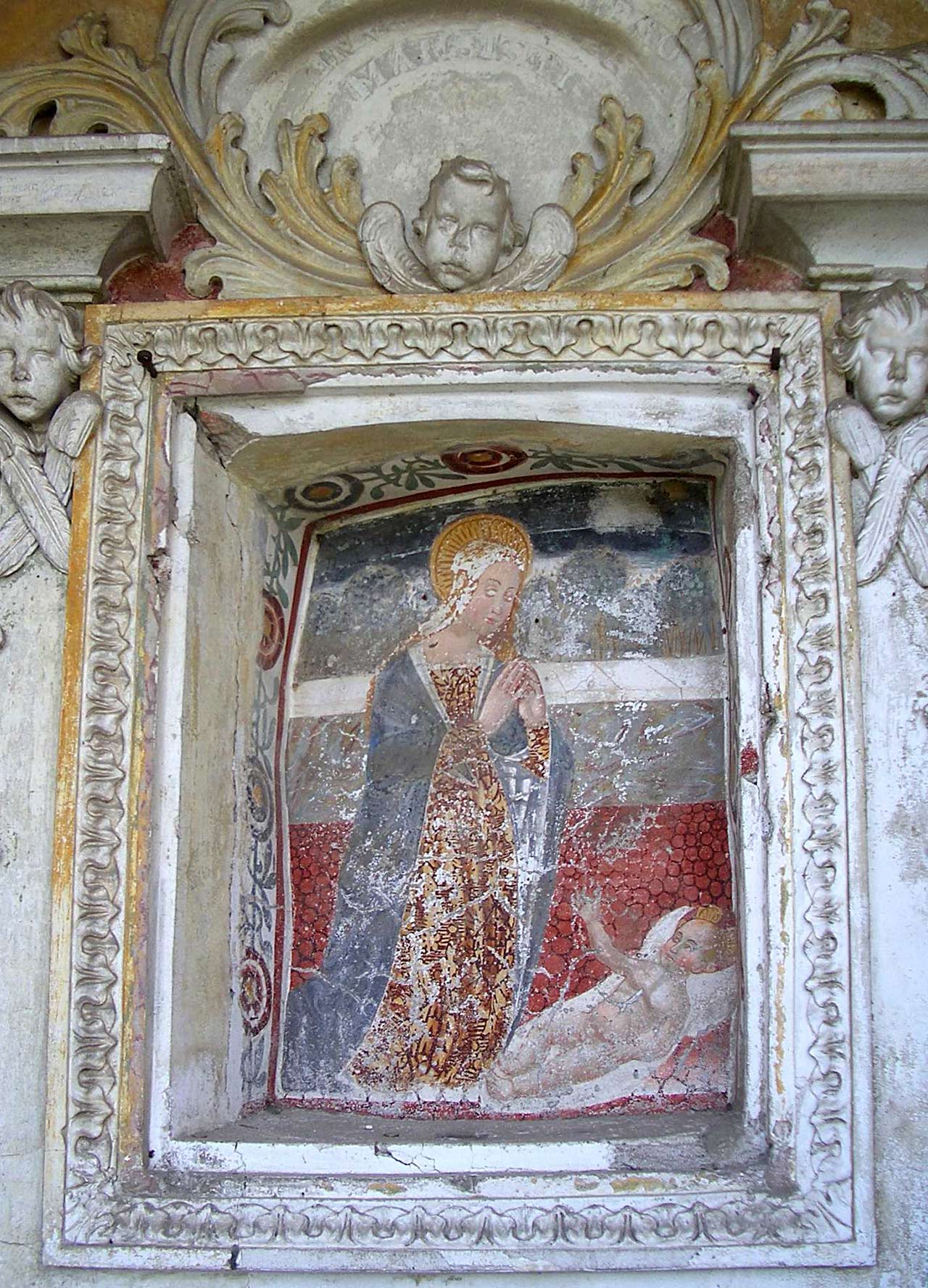
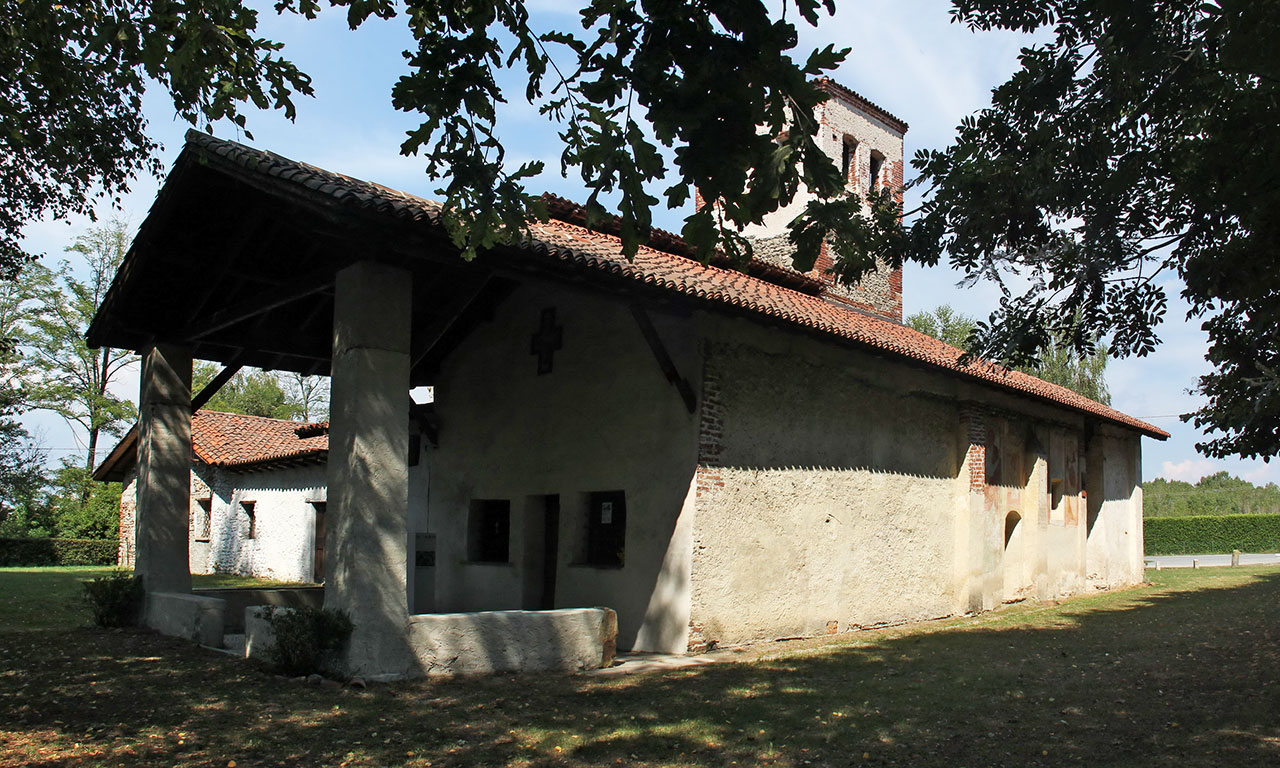

Oratory of the Holy Trinity in Momo
The Sistine Chapel of the people of Novara, along the ancient pilgrim route

Where

What it is and where it is
Not far from the town of Momo stands a small oratory. It is preceded by a portico supported by two pillars and a gabled facade. The exterior walls are plain and simple. It would look in every way like a country oratory. There is one detail that breaks the whiteness of the exterior walls: some traces of frescoes, faded by time and weather, call attention even when reduced to this state. Originally they must have been beautiful. If this is the outside, perhaps it's just the case that we should poke around a bit on the inside as well, who knows what awaits us!
Why it's special
Once inside, it will be stronger than you: an initial "Oh!" will escape you whether you want it to or not, and then you will skip a breath or two, too busy looking around to remember. The walls are adorned with a cycle of colorful, crisp frescoes, extraordinary documentation of Novarese art between the late 15th century and the first decades of the following century. Distributed on two registers, they depict episodes from the life of Christ related to the Infancy and the Passion, as well as the Annunciation and the Last Judgment placed on the counter-façade. The creators of so much splendor were the Cagnola brothers in 1512.
A bit of history
Rising on a side branch of what was formerly the Via Francisca that led from Novara through Borgomanero and Lake Orta to the Alpine passes from Novara, the building was originally built as a resting chapel for wayfarers. Over time various interventions modified the original core of the building. In the early 13th century the chapel was extended westward, turning it into an ecclesia, and in the 15th century the gabled facade was built. In the mid-16th century the hall was extended by one bay and the portico was added to the facade (early 17th century).
Curiosities
Next to the church can be seen a fairly rustic building that has come to lean against the side wall of the religious building. It dates back to the 1600s and tells us about the life of the hermits who took turns inside it, allowed to live on quests and the fruits of a small orchard they cultivated themselves.
Enter the Map of Italy's Undiscovered Wonders and find treasures where you least expect it... Inspire, Recommend, Share...
Contacts
The Map thanks:
In the Community
Enter the Map of Italy's Undiscovered Wonders and find treasures where you least expect it... Inspire, Recommend, Share...
Where

Contacts

